Beyond the hour hand, other ways to display the time
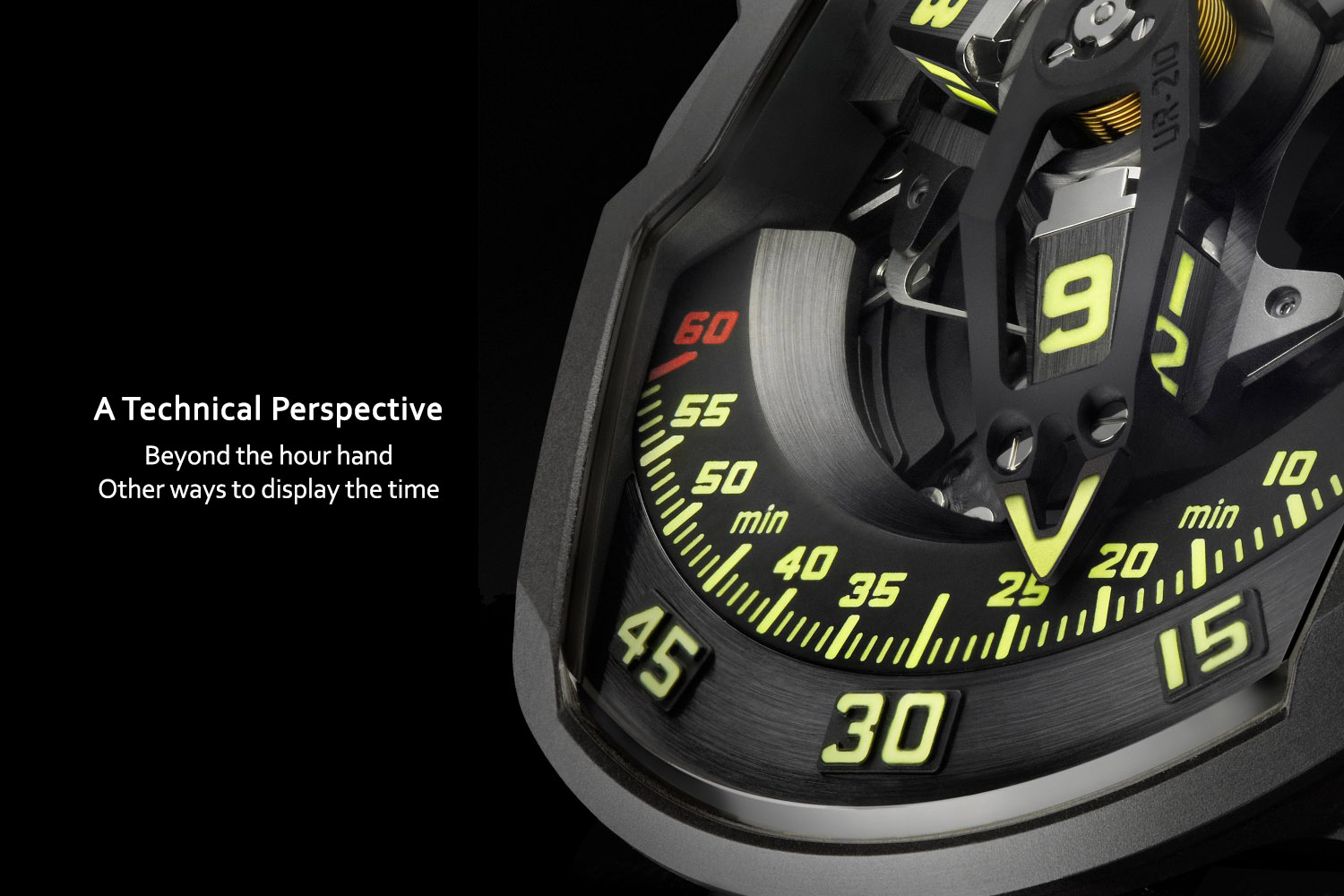
The circular motion of hands has been widely adopted for the use of displaying time for centuries. No doubt it was first inspired by the movement of sundials’ shadow. Like these, early mechanical clocks showed only hours, before the invention of the minute hand. There are however a number of other ways to indicate the hours in mechanical wristwatches. These alternatives offer endless possibilities for watchmakers to express their creativity, with different time displays often involving complex mechanical developments, which in turn opens up a world of bold unorthodox designs capable of exploring time indication beyond the hour hand… This installment of A Technical Perspective will look at the other ways to display the time.
Audemars Piguet pocket and wristwatch with jumping hour – 1921
Jumping or wandering hours
Instead of the traditional analogue indication, jumping and wandering hours use a digital indication. They show time with numerals through a window, very much like a date indication. For jumping hours the hour indication is instantaneous: each hour, the disc jumps forward whereas it moves constantly for wandering hours. Jumping hours are therefore a more complex option requiring a mechanism to accumulate power before releasing it at once with one swift movement.
Unveiled at Baselworld 2016, the Monsieur de Chanel features a jumping hour (heure sautante in French) and retrograde indication.
The De Bethune DB28 Digitale, with jumping hour complication.
The first known examples of jumping hour watches date back to the early 19th century and in particular French horologist Blondeau, watchmaker to the King of France. If these have been quite popular in some periods, they still remain quite rare. However, they are regarded as being a traditional complication which has been used by most major manufacturers over time.
But watchmakers are exploring other bold and creative ways to portray time. In particular, the creative spirit of independent watchmakers has allowed the emergence of timepieces which combine the respect of the highest horological art with spectacular architectures.
Among recent and futuristic developments, the Romain Jerome Spacecraft features a jumping cursor highlighting hours on a lateral hour indication. Every creation by MB&F opens up new avenues to explore, away from conventional watchmaking. The HM5 uses a lateral display to show both the hours and minutes. The mechanics to display time are yet different from the Romain Jérôme Spacecraft and are based on a jumping hour indication, reflected 90° to the vertical and magnified 20%.
In a similar category -provided that such horological UFOs could be categorized- are Urwerk creations. At the helm of the brand, Felix Baumgartner and Martin Frei share a unique and original vision to portray time. Among the creation of these pioneers, the UR202 features a patented revolving satellite complication which is both technically impressive and aesthetically amazing. With its 3 cubes which rotate to indicate the minutes with a telescopic hand, they also rotate on their own axis so the correct hour is shown when the cube travels opposite to the minute track. When arriving at the end of the minute graduation, the telescopic spike retracts into the cube.
Reels, chains and belts
The use of reels, chains and belts has also been explored by so-called independent watchmakers, to display the time digitally. For instance, Christophe Claret Dual Tow features two rubber belts showing the hours and minutes. With Harry Winston, our precious time is linear driven; their Opus 9 displays time with two chains adorned with baguette diamonds and a garnet. Cabestan develops their models based on vertically oriented movements where time rolls on cylinders. Their spectacular architecture redefines the perspective of the mechanics of the watch – for instance, the view of their fusée and chain is spectacular.
Time reconstructed
An utterly complex mechanism and astonishing creation, the Harry Winston opus XI displays the hours in its center with 24 revolving and rotating plates (four satellites with three pairs of plates each). Every hour, an intricate system of gears allows the hour numerals to explode before re-assembling with an increment for the next 60 minutes.
Another creation boasting an ultra-sophisticated time indication is the De Grisogono Meccanico dG shows two time zones combining analogue and digital mechanical displays. Contrary to its appearance it has no electronic components. Its movement features over 650 parts among which 23 cams connected to synchronized gears to command digital display.
Magnetic time
The Claret XTREM 1 is equipped with an extremely original retrograde hour and minute display system with two tiny steel spheres, isolated within sapphire tubes on either side of the case band. To move these, it is by neither mechanical connection nor witchcraft but magnetic fields. Two metal spheres are driven each by a magnetic carriage following a surgical silk thread. An impressive but counterintuitive solution when one knows that magnetism is a traditional enemy of mechanical watches.
Fluidic Horology
The young independent brand HYT made a name for itself being the first brand to craft wristwatches telling time with fluids. Together with its sister company Preciflex, HYT has designed high-tech bellows powered by a mechanical movement to propel fluid into a capillary (less than one millimetre in diameter) to portray time in a linear fashion. The capillary contains two liquids separated by a meniscus; the first one coloured and on the left shows the time. The second one translucent works in opposition to the coloured liquid. When the coloured liquid gets to 6 pm, it switches to retrograde mode, flowing back to its original position.
Jumping indexes
Inspired by the sun, the Helios by Frederic Jouvenot is designed around 12 cone-shaped markers reminiscent of sunrays radiating from the centre of the watch face. Each has a dark and a coloured face. Every passing hour, markers flip to show the time. For instance, the picture below with the first five cones showing their golden face marks 5 o’clock. Minutes are indicated in the center on a rotating disc.
The Harry Winston opus 12, the brainchild of Emmanuel Bouchet, has a similar inspiration although its mechanics are even more complex. Each hour positions have two double sided markers, a short one for hours and a longer for minutes. Each hour, the corresponding marker turns to its coloured side to mark the hours while all others show their neutral face. The same principle applies to the minute markers while they also rotate on top of the hour marker to show intervals of five minutes. A central retrograde hand shows the minutes elapsed between the fives.


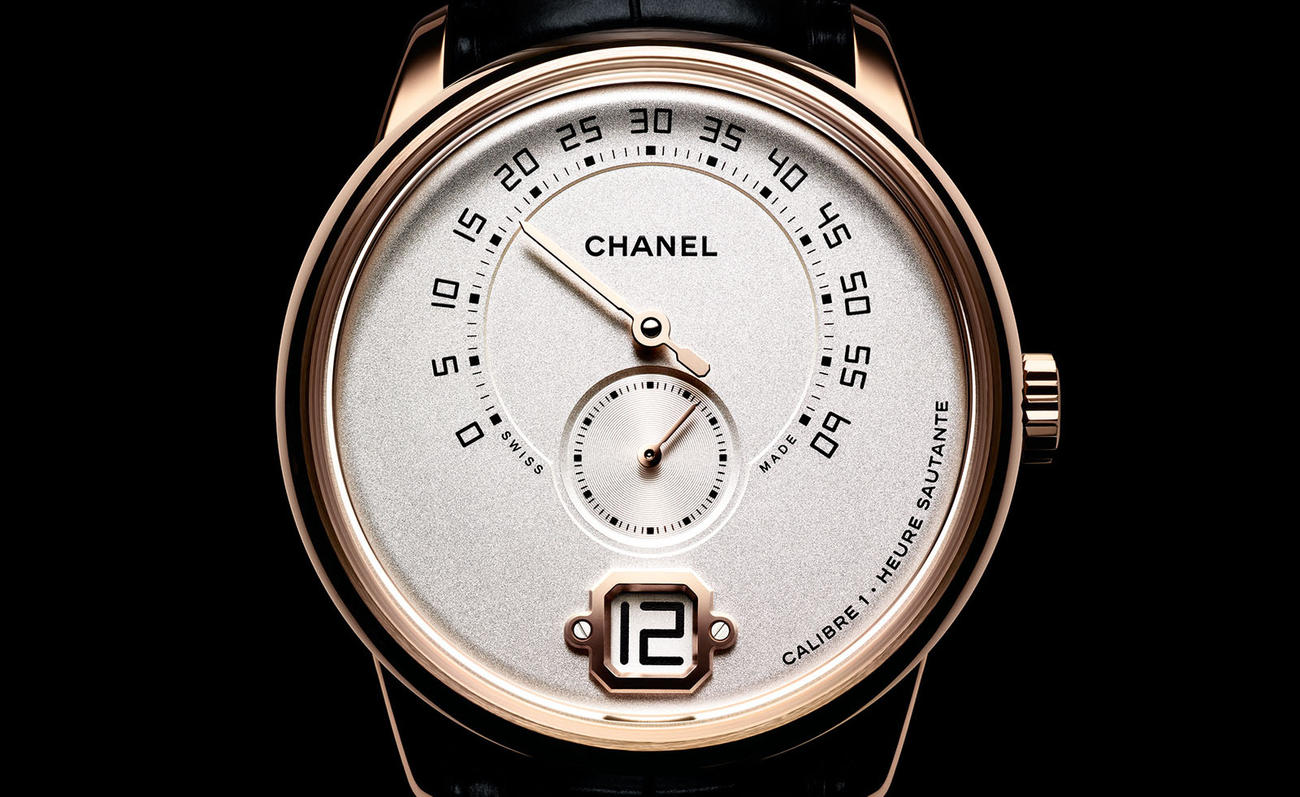
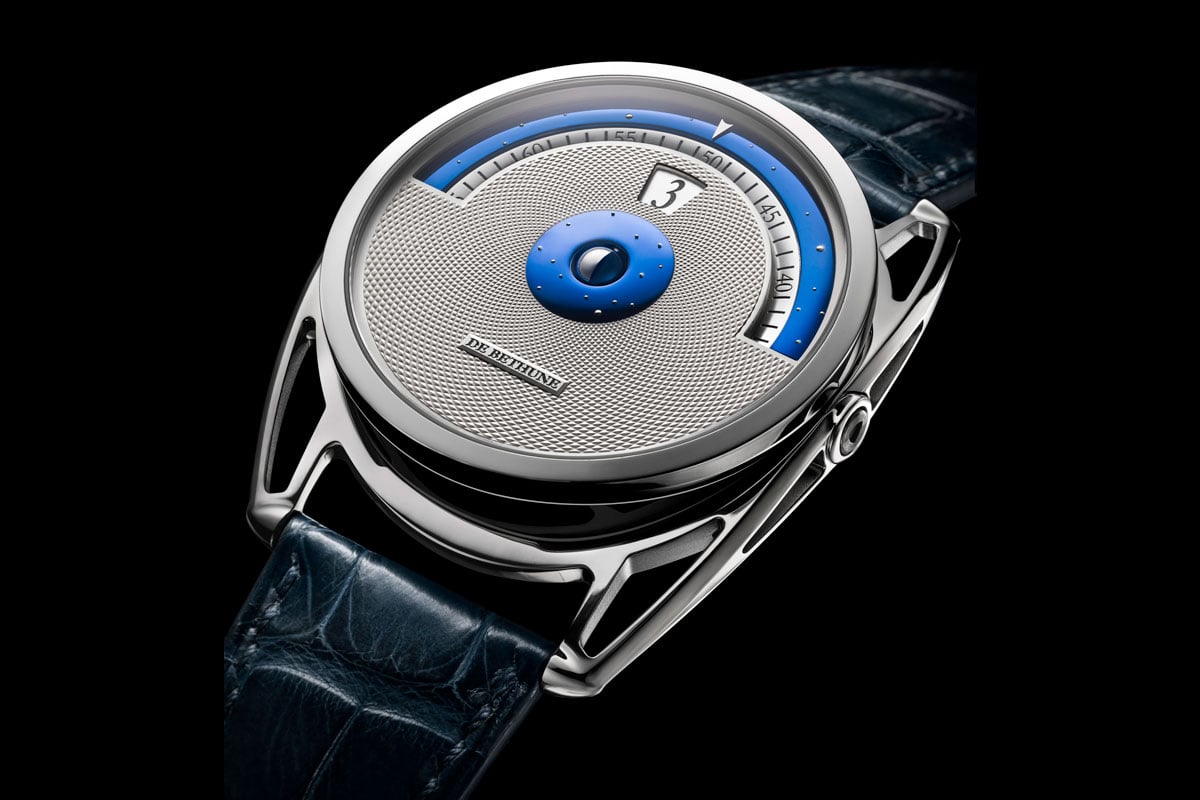
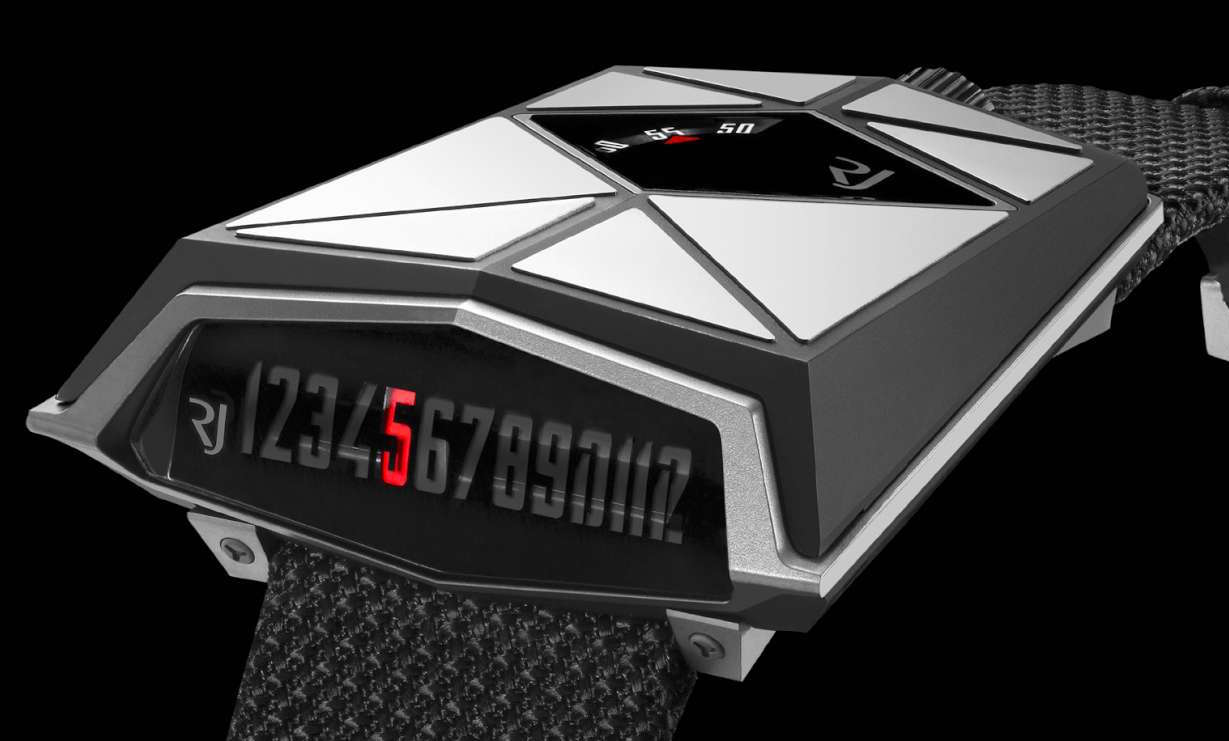
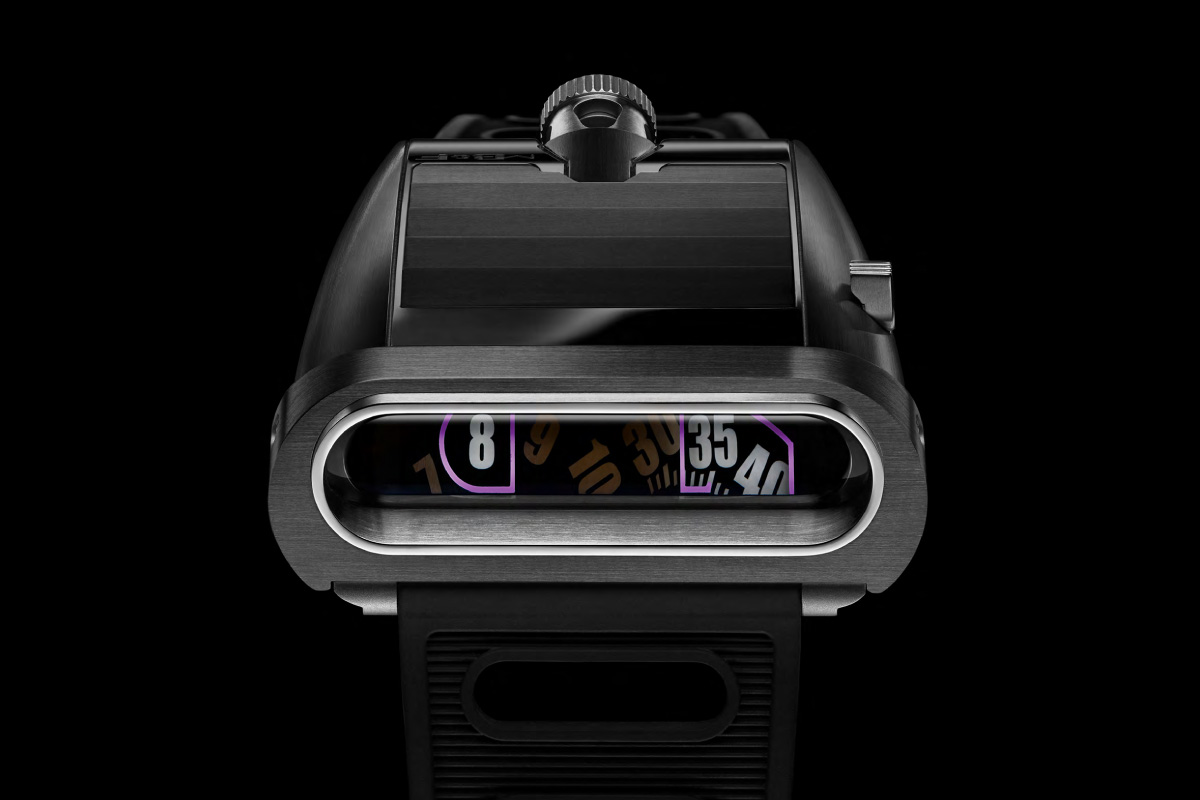
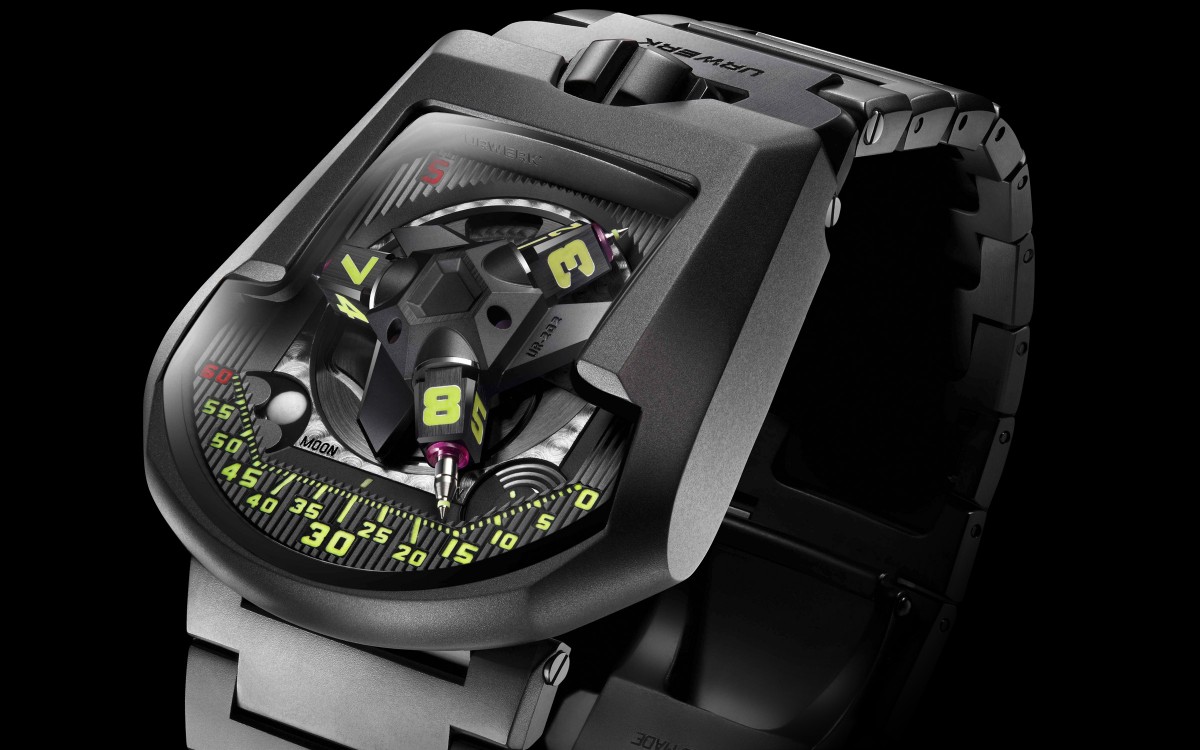
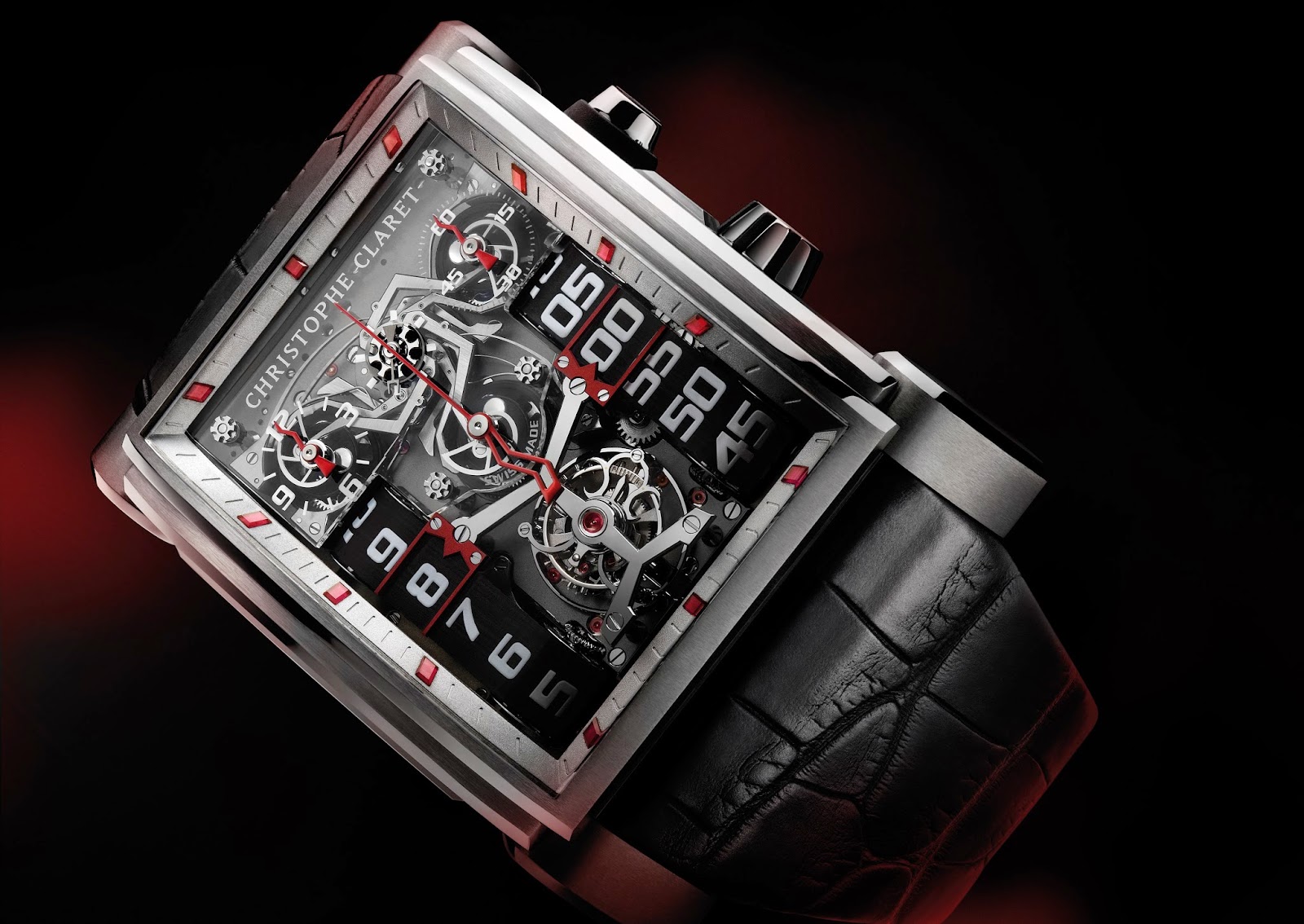
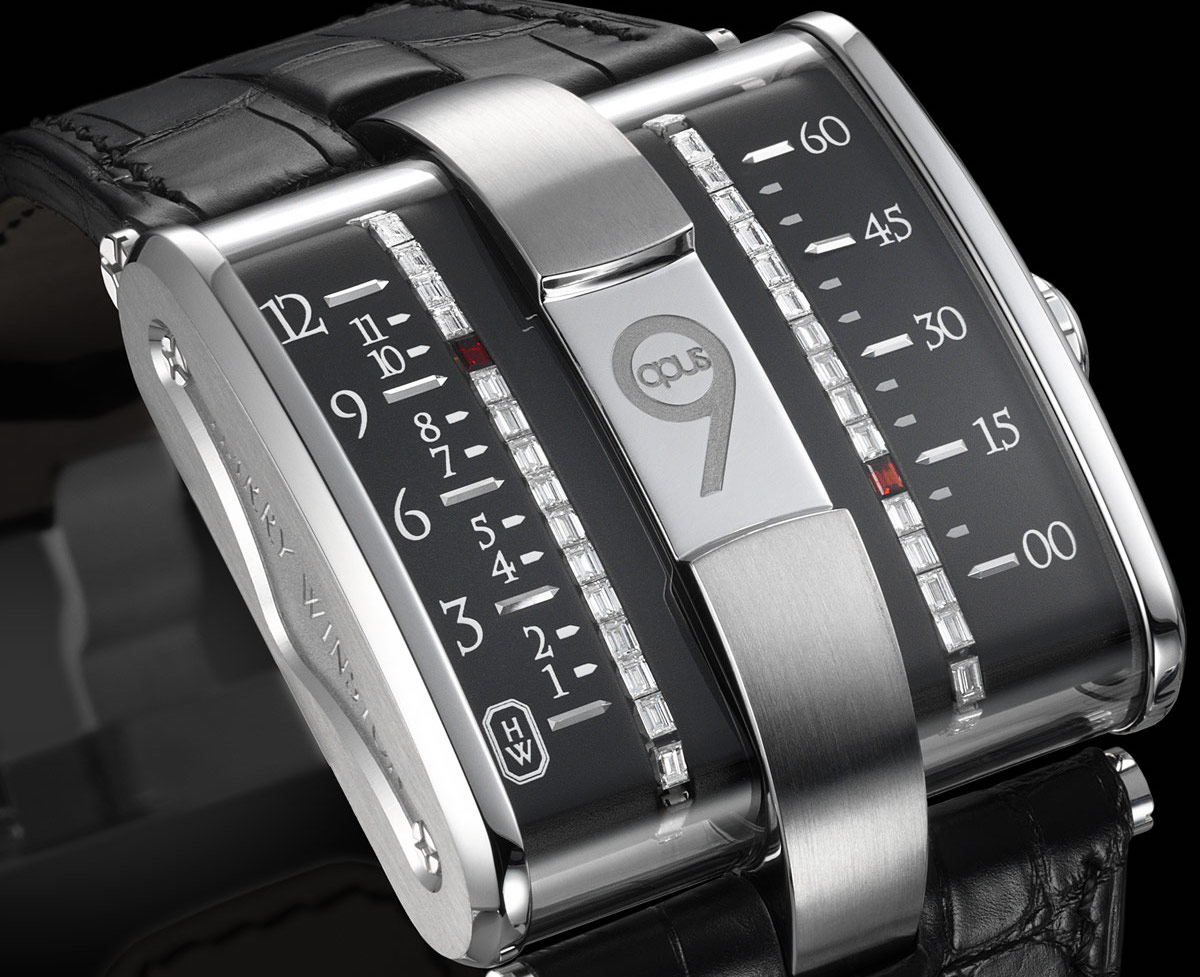

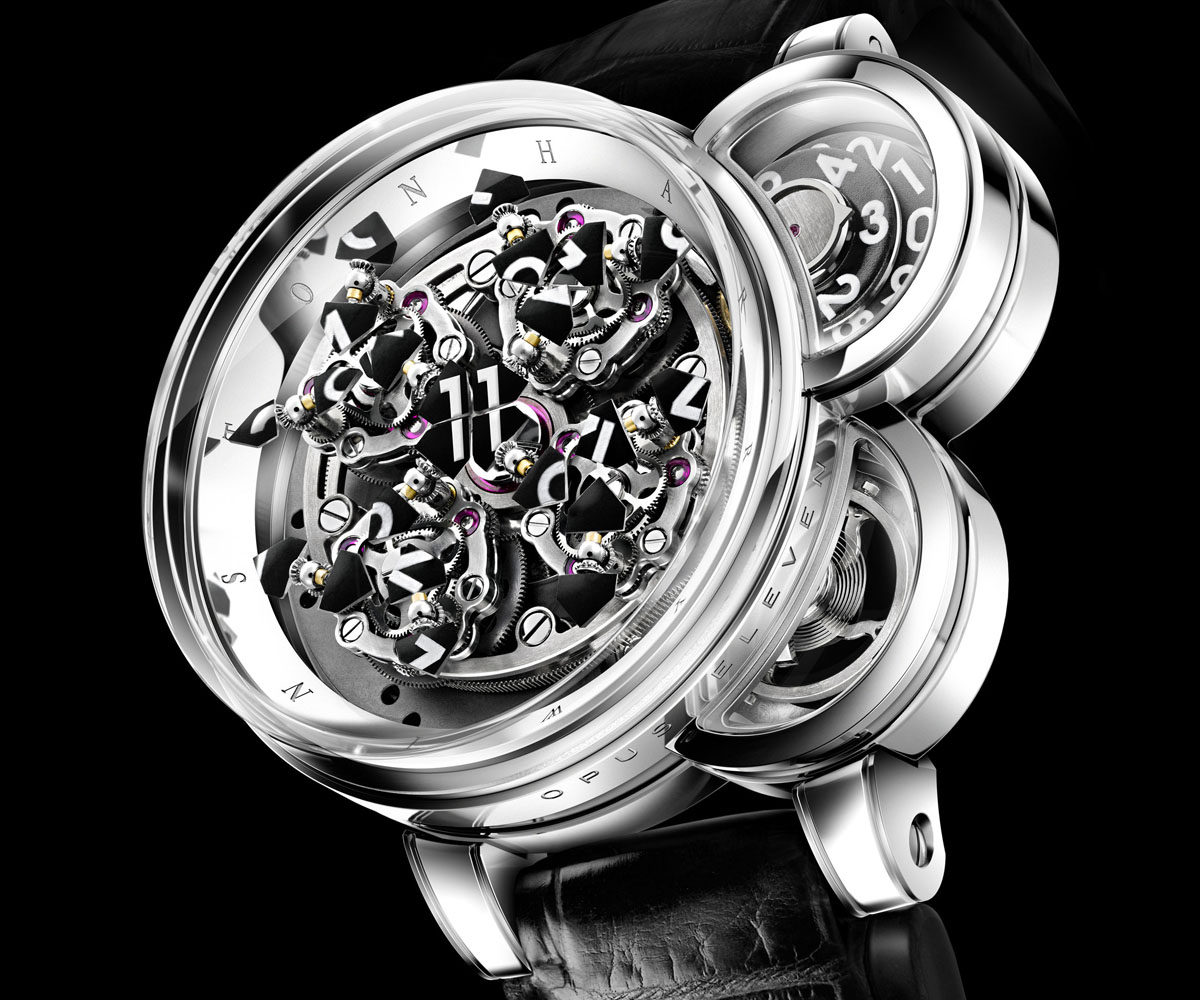
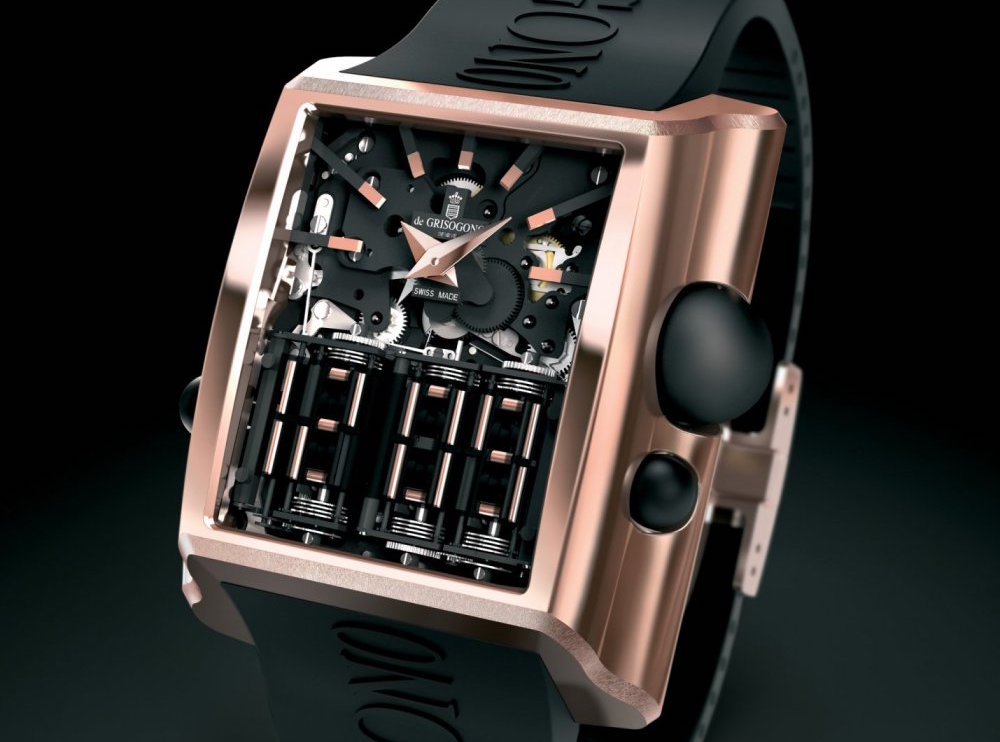
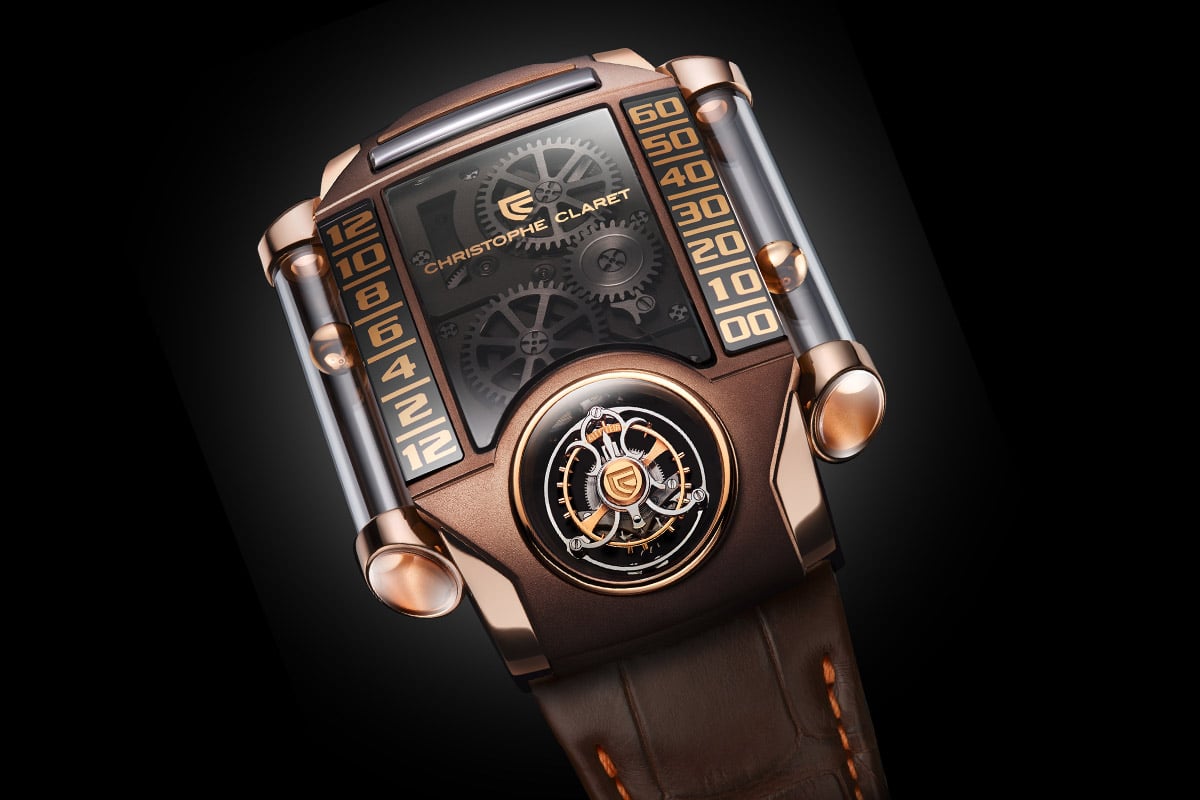
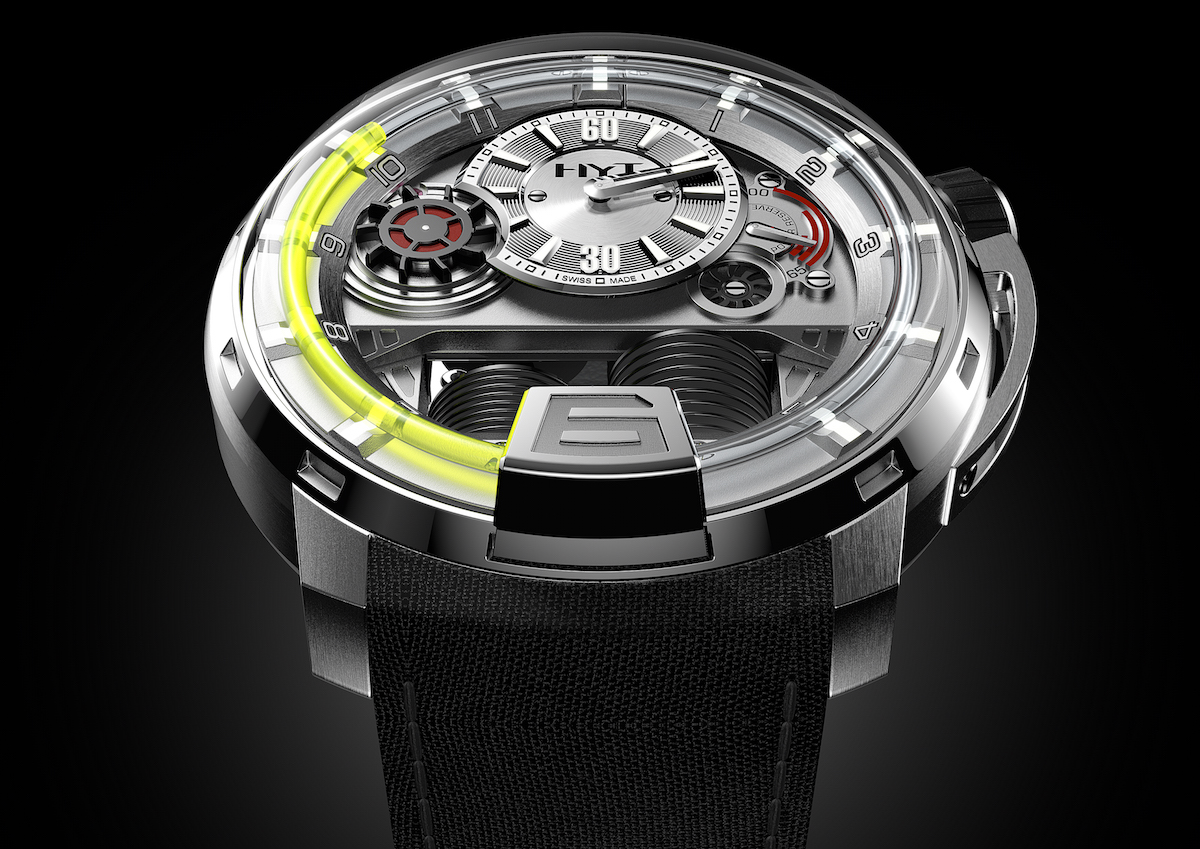

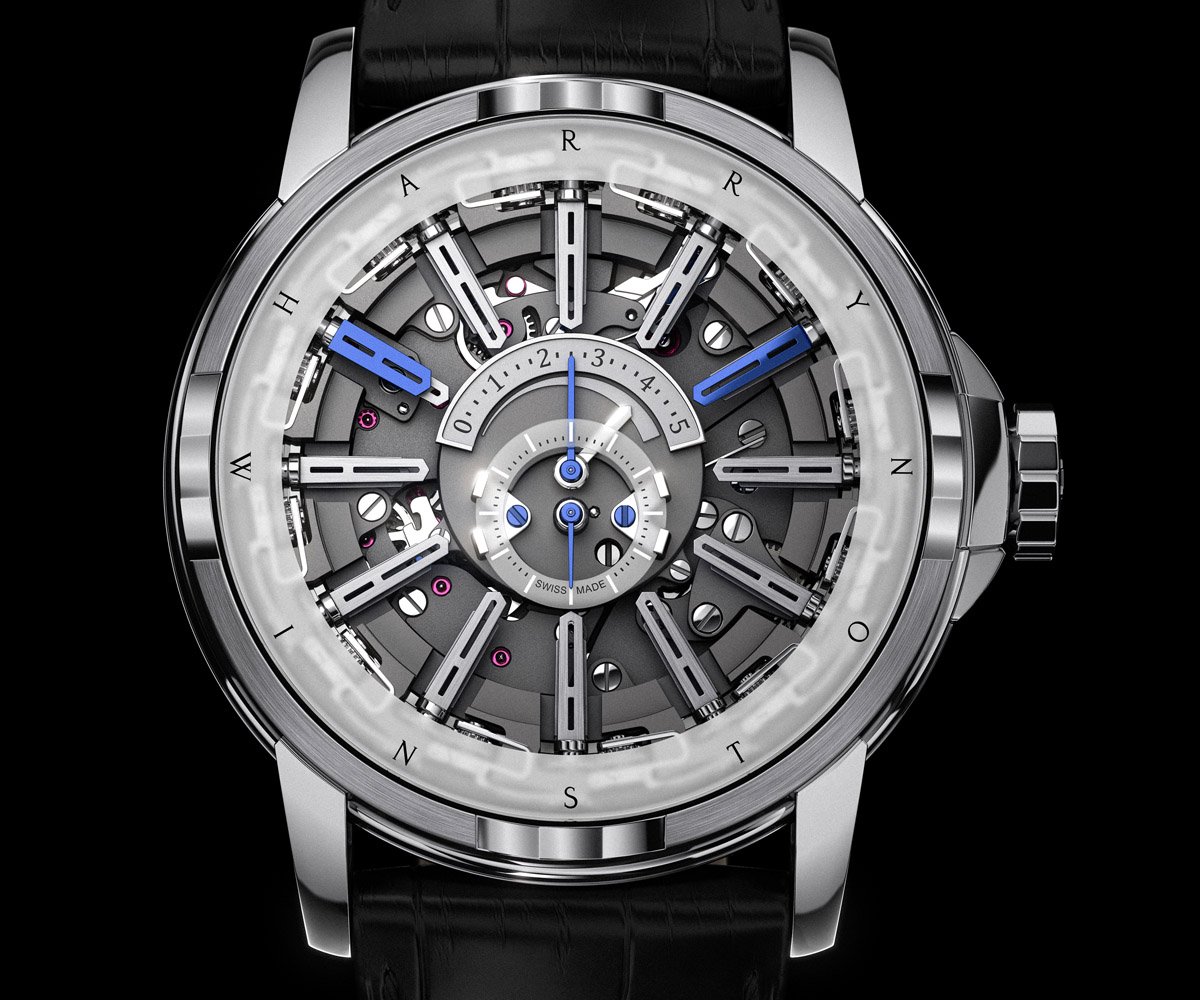



5 responses
For the Opus 12 the long markers are the minutes and the short ones are the hours,
Thanks Jacob, yes this is correct I’ll see with the team if this can be edited.
Great article Xavier but I miss NORD Zeitmaschine Variocurve that have a very interesting way to display the time.
Thanks Jocke. The NORD Zeitmaschine Variocurve is smart indeed. As always we need to choose a few models and this one -with a few others- could have been featured.
No opus 8/3/5?